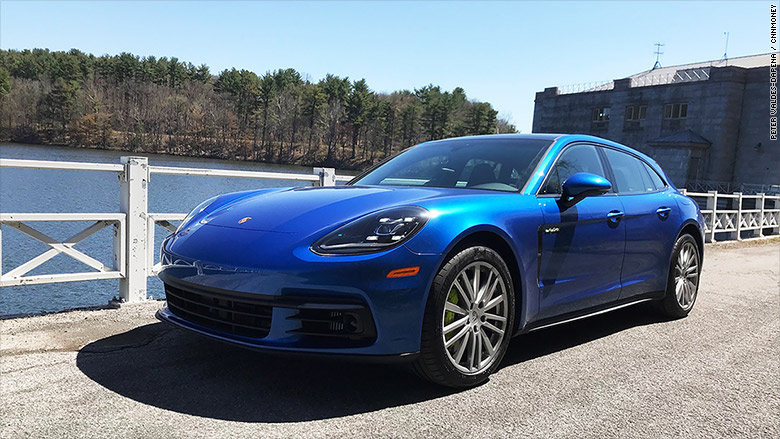I was going almost 50 miles an hour on a mountain road just north of New York City. Ahead of me, the road curved sharply to the left with just a thin metal railing between the speeding car and a long drop down a mountainside into the Hudson River.
I didn’t touch the brake pedal.
Instead, the $120,000 Porsche Panamera plug-in hybrid I was driving slowed on its own, allowing me to steer around the curve. As I unwound the steering wheel, the car accelerated back up to speed on its own
This particular Panamera had two separate cruise control systems. (The price includes both optional systems.) There was the familiar “Active Cruise Control,” which uses radar to sense and slow down for traffic. These days, that’s an option even on many non-luxury cars.
The other, called InnoDrive, is intended for use on twisting, rural roads. You know, the sort of roads where you’d most want to drive a Porsche. Besides radar that lets it detect cars ahead and slow down, it also relies on detailed map data to know when curves or hills are coming up. The car won’t steer around the curve — that’s still up to the driver — but it will automatically slow down, even applying the brakes, to a safe speed for the curve, accelerating back up to speed on the way out.

I turned the system on as I approached a road that snaked over a mountain. I could set the system to obey the posted speed limit — it has cameras to read speed limit signs or, failing that, it can rely on its own map data. If I wanted, I could set my preferred speed higher or lower.
I wanted to go faster.
I took a self-driving Cadillac from New York to Washington
The Panamera charged up the mountain. As I approached the first couple of curves, the Panamera didn’t change speed at all. It just went right through. That didn’t mean the car was unaware of the curves. It just meant that, even at the higher speed I’d set, those bends were no big deal. There was no need for the Panamera to slow down.
Then came that sharp left-hander with nothing but a railing and a partly cloudy sky straight ahead. A blue arrow, curving to the left, appeared in the gauge cluster. It was the car’s way of saying “Yeah, I know.”
The brake pedal moved down and the car’s 8-speed transmission downshifted. I had set the car to Sport mode so the Panamera was moving pretty quickly. I had been warned it might be scary, but it wasn’t. I had used the InnoDrive system a bit already and I’d learned to trust it.
Like a lot of luxury cars, the Panamera has several driving modes including Hybrid, Sport and Sport Plus, that alter how quickly it responds to the gas pedal and steering wheel, when it shifts and gears and how firm the suspension is. The InnoDrive system plays along and drives differently, too.
The self-driving car startup the car industry trusts
When set to Hybrid mode, this car’s default, the Panamera plug-in slowed way down and moved languidly through each turn.
Even in the Sport mode, though, it never felt crazy or unsafe. Honestly, I probably would have driven through those turns faster myself.
A question naturally comes to mind, though. Doesn’t someone buy a Porsche so they can do all this themselves? True. But sometimes you might just want to get someplace and while you give your foot a rest.
As for me, when I was done reviewing InnoDrive, I shut it off, turned the car around, and drove the same road myself using my own right foot. It was way more fun.
CNNMoney (New York) First published May 9, 2018: 11:11 AM ET








